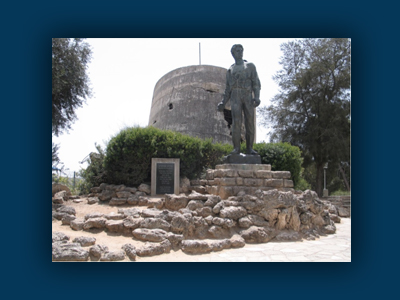Final Communication of Mordechai Anielewicz from the Warsaw Ghetto

April 23, 1943
Following mass deportations from the Warsaw Ghetto to the death camp at Treblinka in the summer of 1942, Mordechai Anielewicz begins to revive the Jewish Fighting Organization (ZOB from the Polish Zydowska Organizacja Bojowa), which he had originally created in 1941. As part of his efforts, Anielewicz helps to merge all of the Jewish underground groups in the Ghetto under the banner of the ZOB, and becomes its commander in November 1942.
Anielewicz had been a leader in the Zionist youth group Hashomer Hatzair (The Youth Guard). During the early years of the war, he tried to set up an escape route for Jews to Palestine through the Soviet Union until Soviet authorities caught him.
The Ghetto Uprising begins following the final deportation of Jews from Warsaw on April 19, 1943. Despite their lack of proper weapons and dwindling numbers of combatants, Anielewicz and his comrades will hold out against the German army until May 8.
Writing on April 23 from the bunker at 18 Mila Street in Warsaw, Anielewicz outlines the success of the revolt even in the face of almost certain defeat. In his letter, Anielewicz writes, “The dream of my life has risen to become fact. Self-defense in the Ghetto will have been a reality. Jewish armed resistance and revenge are facts. I have been witness to the magnificent, heroic fighting of Jewish men and women of battle.”
Anielewicz and the leaders of the Ghetto Uprising will be hailed as heroes in the new State of Israel for their active resistance to the Nazis (see Today in Israeli History, April 12). A group of Hashomer Hatzair members will establish a kibbutz named after Anielewicz, Yad Mordechai (Memorial to Mordechai), near Ashkelon in the south of Israel in December 1943.
The letter is addressed to Yitzhak Zuckerman, who will read it during the Eichmann trial in 1961.
The photo shows a statue of Anielewicz at Yad Mordechai.
To read a biography of Anielewicz from Yad Vashem, click here.